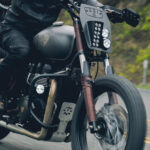Dangers of Winter Slush
Winter driving is inherently more dangerous than summer driving due to the adverse conditions of snow and ice. Slush is a mix of the two, and it’s as dangerous as it is unsightly.
Slush’s heavy mix of snow, ice, and dirt gathers at the edge of the road when snow or ice starts to melt. Slush can occur when snow changes to rain, turning every frozen thing in sight to a wet, clinging mass, or it can fall from the sky during humid snowfalls.
Why is Slush so Dangerous?
Slush grabs at tires, reducing your speed and making it harder to turn, and it can also conceal layers of dangerous ice underneath. Slush on your windows can reduce visibility and overpower windshield wipers, and buildup of sediment and residue held in the snow can erode metal and paint, damaging the surface of your car.
Slushy conditions can become especially dangerous when followed by a hard freeze, as all that loose water freezes and creates dangerous black ice.
When driving in slushy conditions, take care to protect yourself and others by taking a few key precautions.
How to Drive Safely in Slush
Know your route! Planning ahead and leaving with plenty of time can save you the hassle and stress of getting lost and ending up on a poorly-plowed back road. Give yourself a little extra time so that you don’t feel pressured to speed. If you’re running late, call ahead and let the people expecting you know that you’re going to be a few minutes behind schedule. In conditions like this, it’s really not worth the extra risk to save a few minutes.
Speaking of speeding, reduce your speed to ten to fifteen miles under the speed limit. This is a good rule of thumb for all adverse conditions, because it gives you more time to react. Slush impairs your car’s ability to break and turn properly, so it’s especially important to slow down.
Try not to use cruise control. A set speed reduces your reaction time and makes skidding out more likely. If you start to skid, you should release the accelerator to coast safely, but if cruise control is on, your car will continue to spin its wheels.
While you’re at it, increase your following distance to give yourself more room to brake. Your vehicle will be less responsive in adverse conditions, so building in more room will decrease the chance you’ll accidentally rear-end someone.
Finally, follow the car in front of you. Driving in the tracks of the car ahead increases the amount of contact your tires have with the road. More contact means more traction, which means you’ll be less likely to skid or spin out.
With that in mind, make sure to turn slowly so you don’t lose control of the vehicle. Turning slowly means your car has better grip on the road.
Driving carefully can prevent some of the hazards of driving in slushy weather, so use caution, good judgement, and plan ahead for a safe and comfortable ride this winter.








